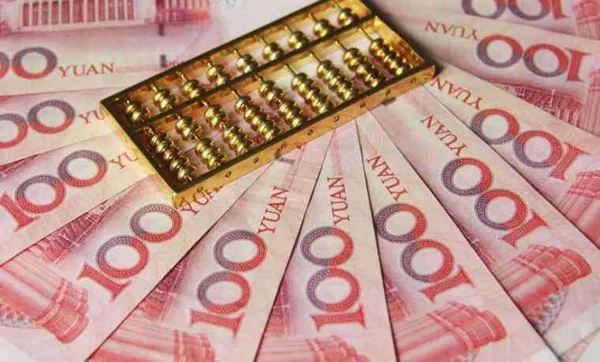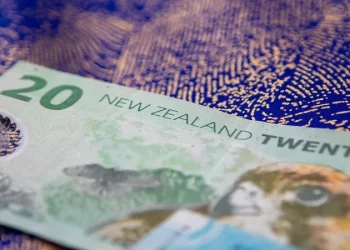In today’s globalized world, foreign exchange (Forex) trading has become an essential part of the financial landscape. Currency exchange, in particular, plays a pivotal role in facilitating trade, investments, and travel. One such exchange rate that has garnered attention in recent years is the exchange between the Chinese Yuan (RMB) and the Indonesian Rupiah (IDR). The relationship between these two currencies is significant for businesses, tourists, and investors engaged in either the Chinese or Indonesian markets.
This article will explore the dynamics of the exchange rate between 50 Chinese Yuan (RMB) and Indonesian Rupiah (IDR), breaking down the factors that influence this conversion, the trends observed over time, and its implications for Forex traders and the broader financial market. Through a detailed analysis, we will shed light on how economic, political, and market factors contribute to fluctuations in the value of RMB relative to IDR.
Understanding the Basics: The RMB and IDR
The Chinese Yuan (RMB) is the official currency of the People’s Republic of China. As the second-largest economy in the world, China plays a critical role in the global economy, and the RMB is one of the most widely traded currencies in the Forex market. The Yuan is primarily used in China and its surrounding regions, and its value is influenced by factors such as economic growth, inflation, interest rates, and the government’s monetary policies.
The Indonesian Rupiah (IDR), on the other hand, is the official currency of Indonesia. Indonesia is Southeast Asia’s largest economy and is heavily reliant on exports, including palm oil, coal, and textiles. The value of the IDR is closely tied to Indonesia’s economic performance, international trade, and commodity exports. The Central Bank of Indonesia (Bank Indonesia) plays a significant role in managing the Rupiah’s value, utilizing tools such as interest rate adjustments and foreign currency reserves to maintain stability.
Exchange Rate Trends: 50 RMB to IDR
The exchange rate between 50 RMB and IDR is constantly changing, influenced by a variety of factors, including macroeconomic conditions, geopolitical events, and market sentiment. For Forex traders, understanding these trends is crucial to making informed decisions in the market.
Over the past few years, the value of the Chinese Yuan has experienced some volatility, particularly in response to changes in China’s economic policies and its trade relationships with other countries. The IDR, too, has seen fluctuations, influenced by global commodity prices, domestic inflation, and political factors. As such, the exchange rate between 50 RMB and IDR can vary considerably from one day to the next, making it important for traders to stay informed about current developments.
Key Drivers of Exchange Rate Movements
Several key factors drive the fluctuations in the RMB/IDR exchange rate. Below, we outline the primary drivers that Forex traders must pay attention to when analyzing this currency pair:
Economic Growth and GDP Performance
Economic growth is one of the most important factors influencing exchange rates. When a country experiences strong economic growth, its currency tends to appreciate, as investors seek to profit from the expanding economy. For China, its robust GDP growth has historically supported the strength of the RMB. The Chinese government’s commitment to economic reforms and infrastructure development has contributed to the currency’s stability.
Indonesia, on the other hand, has faced challenges in maintaining consistent economic growth due to factors such as fluctuating commodity prices and natural disasters. However, Indonesia’s growing middle class and increasing investment in infrastructure projects have supported the IDR, albeit to a lesser extent than the Chinese Yuan.
Interest Rates and Monetary Policy
Interest rates play a critical role in determining exchange rates. When a central bank raises interest rates, it can attract foreign investment, leading to an appreciation of the currency. Conversely, when interest rates are lowered, the currency may depreciate.
The People’s Bank of China (PBOC) and Bank Indonesia both set interest rates and implement monetary policies that directly influence the strength of their respective currencies. For example, China’s monetary policy has often been focused on maintaining economic stability and controlling inflation, which in turn supports the value of the RMB.
Indonesia’s central bank, on the other hand, has used interest rate adjustments to manage inflation and stabilize the IDR. However, Indonesia’s higher inflation rate, compared to China, can lead to greater volatility in the IDR, making it more susceptible to large swings in value.
Trade Balances and Exports
Both China and Indonesia are export-driven economies. As one of the world’s largest exporters, China has a trade surplus, meaning it exports more than it imports. This surplus increases demand for the RMB, as foreign buyers need to purchase the currency to pay for Chinese goods and services.
Indonesia, while also an exporter, has a more volatile trade balance due to its reliance on commodity exports. Fluctuations in the prices of commodities like palm oil, coal, and rubber can have a significant impact on Indonesia’s trade balance and, consequently, the value of the IDR. A decline in commodity prices can lead to a depreciation of the IDR, while rising commodity prices can strengthen it.
Political Stability and Geopolitical Risks
Political stability plays a significant role in determining the attractiveness of a currency to foreign investors. Investors are generally more willing to invest in countries with stable political environments, as these offer a lower level of risk. China, with its tightly controlled political system, is often seen as a stable environment for investment, which supports the RMB.
Indonesia, as a democratic nation, has experienced periods of political instability, which can create uncertainty in the markets and impact the value of the IDR. Geopolitical risks in the region, such as territorial disputes or global trade tensions, can also affect the currency’s value.
Global Market Sentiment and Risk Appetite
Finally, global market sentiment and risk appetite can have a significant impact on the exchange rate between 50 RMB and IDR. In times of global economic uncertainty or financial market turmoil, investors tend to seek safe-haven currencies such as the US Dollar, Swiss Franc, and Japanese Yen. This can lead to a depreciation of riskier currencies, including the IDR.
Conversely, when global economic conditions are favorable, risk appetite increases, and investors may seek higher returns in emerging markets like Indonesia. This can lead to a strengthening of the IDR relative to other currencies, including the RMB.
The 50 RMB to IDR Conversion: Implications for Forex Traders
For Forex traders, the ability to accurately forecast the exchange rate between 50 RMB and IDR is essential to making profitable trades. Traders use a combination of technical analysis, which involves analyzing past price movements, and fundamental analysis, which looks at economic and political factors, to make informed decisions.
Technical Analysis
Technical analysis involves studying historical price data, such as charts and patterns, to predict future price movements. Common tools used in technical analysis include moving averages, Relative Strength Index (RSI), and Fibonacci retracement levels. Traders often use these tools to identify trends and price levels at which currencies are likely to reverse course.
For example, if the RMB/IDR exchange rate has been steadily rising for several months, a trader might look for signs of a reversal or a correction in the market, such as overbought conditions indicated by the RSI. Conversely, if the exchange rate has been falling, traders might look for signs of support or a potential rebound.
Fundamental Analysis
Fundamental analysis focuses on understanding the broader economic, political, and market factors that drive exchange rate movements. Traders who use fundamental analysis will closely monitor key indicators such as GDP growth, inflation rates, interest rates, trade balances, and political developments in both China and Indonesia.
For example, if China announces a significant increase in infrastructure investment or a change in its monetary policy, it could have a direct impact on the value of the RMB. Similarly, any changes in Indonesia’s economic outlook or political stability could influence the strength of the IDR.
Risk Management Strategies
As with any currency pair, trading 50 RMB to IDR comes with inherent risks. Currency values can fluctuate unpredictably due to unexpected economic or geopolitical events. Therefore, it is crucial for traders to implement sound risk management strategies, such as setting stop-loss orders, diversifying their portfolios, and using proper position sizing to protect against adverse market movements.
Conclusion
The exchange rate between 50 RMB and IDR is influenced by a variety of factors, including economic performance, interest rates, trade balances, and political stability. Both the Chinese Yuan and the Indonesian Rupiah have experienced fluctuations in recent years, with the RMB typically being more stable due to China’s robust economic performance and political control.
For Forex traders, understanding the drivers of exchange rate movements between these two currencies is essential to making informed trading decisions. By combining technical and fundamental analysis with effective risk management strategies, traders can navigate the complexities of the RMB/IDR exchange rate and capitalize on market opportunities.
In conclusion, the exchange rate between 50 RMB and IDR reflects not only the economic conditions of China and Indonesia but also the broader trends in the global financial market. As such, staying informed about global events, economic data, and political developments is crucial for anyone looking to trade these currencies successfully.
Related Topics:



























